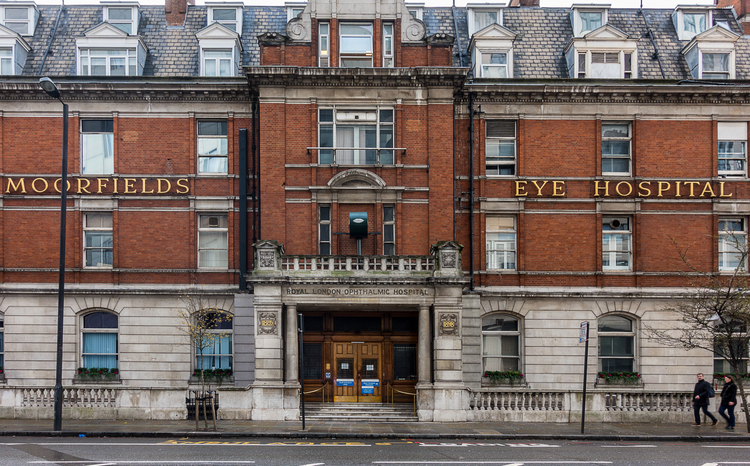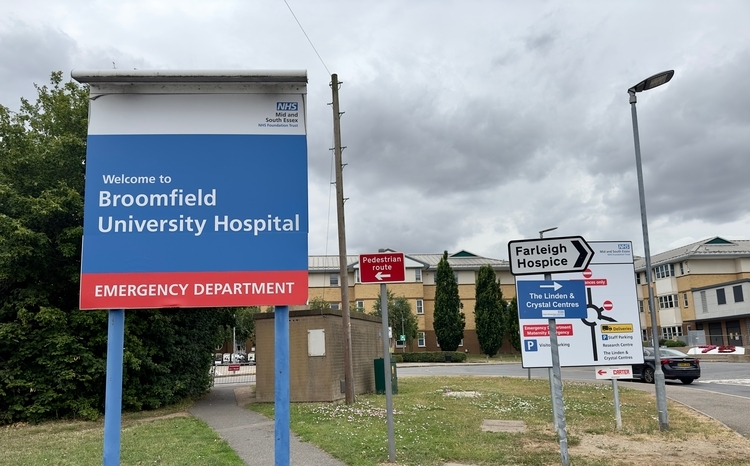Belfast trust green-lights digital tagging system for tracking patient records
- 1 November 2017

The UK’s largest integrated Health and Social Care trust is introducing an electronic tracking system to make it easier to keep tabs on health records.
Northern Ireland’s Belfast Health and Social Care Trust will implement Idox Health’s iFIT logistics management solution at the Royal Victoria Hospital to help staff cope with the growing number of records stored at the site, as well as better safeguard patient information.
iFIT uses a system of Radio-Frequency Identification (RFID) tags that can be attached to patient records. Each tag carries a unique serial number that allows hospital staff to track its location from a mobile device from more than 13 feet away.
RFID sensors installed at ‘key’ locations inside the hospitals will automatically read the tags as they pass, meaning their location can be monitored as they move around the hospital.
According to Idox, the system will also allow BHSCT to eke out an additional 20% of shelf space in the Royal Victoria Hospital’s records library, which currently holds clinical notes on some 180,000 patients. iFIT will be introduced to additional BHSCT sites at a later date.
Shelves in the trust’s medical records libraries will be assigned a Global Location Number based on the Department of Health’s GH1 standards, allowing each file to be to be precisely located. Because the technology does away with the need for sequencing, Royal Victoria Hospital will be able to realise its maximum capacity of 250,000 records immediately, Idox claimed.
A spokesperson from BHSCT said: “With the multiple challenges our trust now faces, maintaining service during a period of increased demand whilst at the same time saving money is a delicate balance. The introduction of iFIT helps meet both these challenges and it frees up capacity for other uses and acts as a platform for further projects.”
While iFit will initially just be used to track patient records, Idox said that the system would eventually allow BHSCT to track other important hospital assets such as equipment, medication and potentially even patients themselves, as well as serving as a jumping-off point for the trust’s electronic patient record ambitions.
Implementations of RFID tagging in hospitals in the UK have thrown up positive results. As Digital Health News reported in June, Forth Valley Royal Hospital in Scotland was able to achieve cost avoidance savings of £360,000 through placing RFID on pieces of equipment including hospital beds, syringe drivers and patient monitors.
As well as enabling staff to more easily locate medical devices, it provided insight into which devices were and were not required, allowing them to sell of surplus equipment and avoid making unnecessary purchases.
Meanwhile, trials of the the Department of Health’s Scan4Safety project – a barcode system for tracking patients, hospital staff and equipment – is reported to have delivered an uptick in patient safety and improved accountability at the six NHS trusts where it is currently being piloted.
Karen Gorman, head of sales at Idox Health, said iFIT will have a huge impact on the way Health Records operate at the trust, while also providing the basis for GS1 compliance.
“Having signed a second Trust in Northern Ireland, Idox Health are now becoming a major supplier to the region”, she said.





11 Comments
You don’t do it until you can do it right, that is the point.
Pretty close means nowhere near in the world of software. People who have done stuff know that
So because it’s not perfect we’ll give up – I’ll let Elon Musk and Apple know about your approach – I am sure they will be interested…
Well Geoffrey, in theory there’s no difference between theory and practice, in practice there is [Yogi Berra].
If you can take a casenote library and find any software that will actually do that, at scale, with the kind of things you will find in notes, I’d be amazed. If you can get it to index those notes with all the specialties happy that their things are in the right place, on the right tab, in the right order, I’d be amazed.
On the other hand if you find a supplier who will promise to do it, I would not be surprised at all.
Maybe not perfect but pretty damn close and more accessible than the paper – the software is getting better all the time…
good EDMs have OCR and indexing so not just PDFs, searchable digitised content…
It amazes me the amount of experts that come out of the woodwork when these articles get printed. I wonder how many of them have seen a set of notes, or thought about how their use would translate into a thousand thumbnails of a PDF on the screen of a clinician in outpatients. Just scan it? I don’t think so. You need a way of automating scanning including bar coding your essential stationery, and bear in mind you are going back in time here. This at least then provides some indexation. Future plans obviously will include direct data entry but how would you experts merge this with the old stuff? I wonder how the experts would provide continuity across a large hospital where anyone who sees the patient needs to know the complete picture where the patient has potentially seen services that are paper, semi-paper and paperless, old and new? Oh sorry it’s all easy. My bad.
why not use EDM then you don’t ever lose the paper again…just sayin…
Quite – and there is still a problem if the patient has lots of separate paper notes scattered around different locations, as happens at my Trust where there is a central EPR backed up by voluminous departmental paper records.
Typical backwards NHS logic!
So… rather than put them into a digital system where they can’t get lost…. they need RFID to put into/onto files to track where the files have gone… physical files…. in 2017.
This is white knuckle stuff…. cause by frustration.
Hospital level IT is in the dark ages. This is faster horses stuff.
Comments are closed.